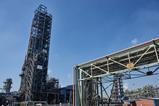Following an eye-opening study published last year, journals published by Wiley have abandoned the ±0.4% accuracy standard for elemental analysis.
First developed in the 18th century, elemental analysis quickly became the gold standard of compound characterisation, allowing early chemists to accurately determine the relative proportions of different elements present in a sample. Even today, with many more modern techniques available, elemental analysis remains a valuable data point and most journals require this analysis to within ±0.4% as standard. However, this tight error margin has historically caused a lot of frustration within the research community. Most teams must pay for commercial analysis and the high failure rate, coupled with the lack of raw data, delays publication.
Curious to explore the truth behind the community’s complaints, in 2022 an international team around Caleb Martin at Baylor University, US, devised a study to investigate the reliability of commercial elemental analysis and the corresponding validity of the ±0.4% accuracy standard required by journals. ‘There are rumours that people just keep submitting the same sample until they get the right result which has been pointed out in a response by Vincent Lavallo,’ says Martin, ‘We wanted to know how results vary across companies and if high purity chemicals from the bottle would pass the 0.4% that journals demand. The results are dependent on purity and, theoretically, could actually require that some samples be 99.6% pure!’
The team selected five commercial chemicals containing varying proportions of carbon, hydrogen and nitrogen and sent identical samples to 17 commercial companies across four continents. Each sample was also tested on a freshly-calibrated instrument owned by Saurabh Chitnis at Dalhousie University in Canada. Subsequent statistical analysis validated the community’s frustrations: 10.78% of samples failed to meet publication guidelines despite being adequately pure.
The team’s analysis could not identify a specific reason for this high failure rate – ‘fail’ results were effectively random across all providers – but it did highlight another important issue with the current 0.4% standard. As most compounds contain very different proportions of carbon, hydrogen and nitrogen, a blanket error margin is oversensitive for abundant elements, and under sensitive for the less abundant components. ‘If you have 50% carbon and 5% hydrogen, obviously 0.4% is a much larger proportion of the total hydrogen than the total carbon,’ explains Jason Dutton, another member of the team from La Trobe University, Australia. ‘This means a compound could contain quite a large hydrogen impurity and still pass, whilst a smaller impurity containing carbon would cause the sample to fail.’
What next for journals?
The international team, which also included Rebecca Melen at Cardiff University and Rupert Kuveke at La Trobe University, concluded that the existing ±0.4% standard simply isn’t scientifically justifiable and hoped their findings would encourage journals to re-evaluate their publishing requirements.
Wiley was quick to respond to the study and officially updated their publishing guidelines in October, waiving the requirement for ±0.4% accuracy. ‘The data from the study by Kuveke et al suggests that elemental analysis is too unreliable for required routine use,’ a spokesperson for the publisher said. ‘[It] spurred discussion among chemistry editors who decided in October 2022 to update the notice to authors for society-owned chemistry journals published by Wiley. The revised guidelines state that “evidence for elemental constitution should be provided by satisfactory elemental analysis, in which case duplicate analysis should be obtained and an average presented”.’
Currently, Wiley remains the only publisher to have changed this standard across all its chemistry journals but the Royal Society of Chemistry is in the process of updating author guidelines on this issue. ‘We agree that the ±0.4% accuracy standard for elemental analysis is no longer appropriate, and so this will no longer be specified,’ says May Copsey, an executive editor at the RSC. ‘We will be including a stronger emphasis on providing alternative data sources to support homogeneity and purity, and encouraging authors to provide instrumental details and the chromatograms of the performed measurements.’
Other publishers are taking a more conservative approach, but are aware of the concerns surrounding current guidelines. American Chemical Society journals have not changed their publishing requirements and stated that ‘further discussion within the community may be needed to reach a consensus on a new standard’.
Martin agrees that further investigation is necessary to resolve this matter effectively. ‘We identified a problem, but I think in the long term this is something that a governing body should look into. Analytical experts need to evaluate this and propose a standard that is realistic based on instrument accuracy and required purity,’ he says.
This article was updated on 21 June 2023 to add all names of the leaders of the team

















No comments yet